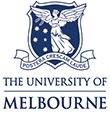Ross River virus genomes from Australia and the Pacific display coincidental and antagonistic codon usage patterns with common vertebrate hosts and a principal vector
Authors:
- Madzokere, Eugene T.
- Freppel, Wesley
- Pyke, Alyssa T.
- Lynch, Stacey E.
- Mee, Peter T.
- Doggett, Stephen L.
- Haniotis, John
- Weir, Richard
- Caly, Leon
- Druce, Julian
- Robson, Jennifer M.
- van den Hurk, Andrew F.
- Edwards, Robert
- Herrero, Lara J.
Details:
Virology, Volume 608, 2025-07-31
Article Link: Click here
Around 4500 Ross River virus (RRV) human cases are reported in Australia annually. To date, there is no registered nor licenced vaccine to protect against RRV disease. Identifying and substituting preferred with less-preferred codons and dinucleotides is a recognised strategy to attenuate viruses and may prove useful to vaccine development efforts for RRV and other related viruses. Here, we used bioinformatic approaches aimed at assessing evidence of codon usage and dinucleotide bias in 55 RRV whole genomes sampled from humans (Homo sapiens), macropods (Notomacropus agilis), and the Aedes vigilax mosquito. Our results indicate that RRV undergoes positive and negative codon usage bias with natural selection as the major force driving RRV codon usage patterns. RRV displays a bias towards codons with an A or C at the 3rd position while H. sapiens displays a G or C and N. agilis and Ae. vigilax both show bias towards codons with an A or U at the same 3rd position. RRVs codon usage patterns are coincidental to those displayed by common vertebrate hosts and antagonistic to patterns of Ae. vigilax. The coincidental bias identified suggests vertebrate host gene expression greatly influences RRV evolution. In addition, we show that the UG dinucleotides in RRV are overrepresented at all three codon sites, while CA dinucleotides are only overrepresented at codon sites 1–2 and 2–3. These over and under-representations can be exploited to develop attenuated RRV RNA vaccines. The approach utilised here could also be used to develop vaccines for other alphaviruses of global importance.


